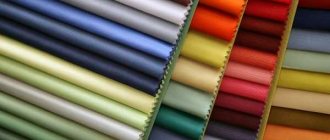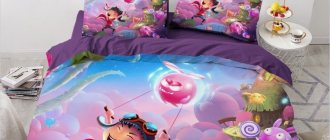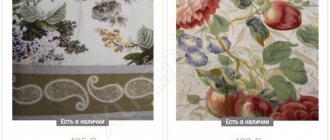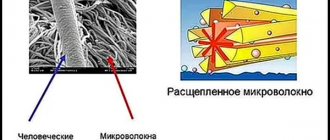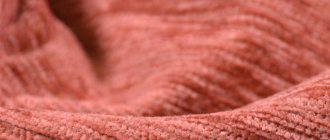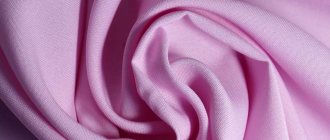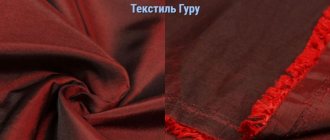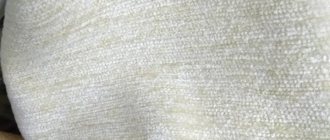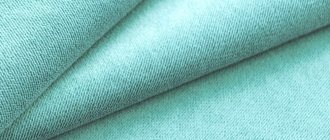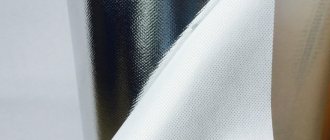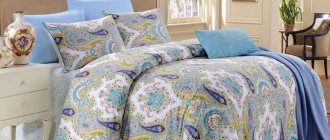Excursion into history
The only drawback of products made from mako-satin is the high cost.
Satin was first brought to Europe by Arab traders, bringing it from China along the famous Silk Road. Chinese weavers from the city of Quanzhou created a new type of fabric that had the shine and fineness of silk, but was much cheaper.
Among caravanners, the city of Fujian weavers was known as Zaitong. Already the Europeans, who fell in love with the new fabric from a distant land, changed this word to “satin”, beginning to call the new material that way.
It became fashionable in France and spread throughout the aristocratic courts of Europe. It is interesting that this is almost the only elegant fabric that not only the nobility or the wealthy class, but also people of middle income could afford.
As always happens, market demand determines supply, so the weaving industry did not stand still, offering fashionistas more and more new satin options.
This is interesting: Non-woven formband: types, use of video, care
Pros and cons of fabric
Advantages:
- Quick drying after washing.
- High breathability.
- Not electrified.
Flaws:
- Expensive price, which is not suitable for every average resident of Russia.
- Basically, products made from mako-satin are produced exclusively in factories, so sewing something yourself will be much more expensive than buying it in a store.
- The products are related only to bed linen, you won’t see anything else.
For connoisseurs of quality, elegance and comfort
Satin is considered one of the best cotton fabrics for bedding, and mako satin is more than just satin
.
The raw material for it is long-staple Egyptian cotton of the Mako variety. It allows you to get the thinnest yarn, which means the lightest and at the same time dense and durable fabric.
Bed linen made from this satin looks elegant and luxurious. Silky and soft to the touch, with a slight satiny sheen, it is also very practical: it is easy to wash and almost does not wrinkle.
What is the difference from satin
Satin (also known as satin) weaving is characterized by the fact that the transverse thread (weft) steps over the warp thread with a pitch of 4:1. This is what makes the front side smooth and silky. At the same time, double twisted threads are used for satin weaving, which allows us to weave an unusually durable and wear-resistant material.
The density of high-quality satin is about 120-140 threads per 1 square meter. cm, and the density of mako satin reaches 220 threads per 1 sq. cm
. And this with a weight of only 125 g per 1 square meter. meter. The denser the bedding fabric, the longer it will last. Mako satin linen can withstand up to 300 washes.
How did you find such cotton?
The variety has been known since the 19th century and is grown in the North of Egypt, in the Nile Delta
. There are several varieties of long-staple Egyptian cotton. These are, in particular, Giza 45, Giza 93, Giza 87, Giza 88. They produce fibers with a length of 34 to 50 millimeters. Giza 45 is considered the most valuable and high-quality. In fact, this is the mako variety.
The history of the name "mako" has several versions.
According to one of them, cotton of this variety grew in the garden of the governor of Cairo, whose name was Mako Bey el Orfali. It was discovered in 1810 by French entrepreneur Louis Alexis Jumel. An enterprising Frenchman suggested to the then head of Egypt, Muhammad Ali Pasha, to begin growing such cotton on an industrial scale. The story of the governor's garden is quite plausible. The flowering cotton plant is truly beautiful. The plant belongs to the mallow family and during the flowering period it pleases with large and bright flowers, the same as those of an ordinary garden mallow.
Another version says that the seeds were brought to Egypt from India or Sudan and the same Mako Bey showed this cotton to the Egyptian pasha, and the Frenchman, in turn, convinced the leader of Egypt to set up plantations. Whether this is true or not, cotton mako in France is still called by the name of its compatriot - coton Jumel.
Features of cultivation
The ripening period of bolls for long-staple cotton lasts one and a half times longer than for conventional varieties. This requires certain climatic conditions. The share of this crop in total production does not exceed 5%.
In addition to Egypt, there are also plantations in Pakistan, Peru and Sudan, but Egyptian cotton is considered the highest quality. Its not only long, but also thin fibers make it possible to produce the finest yarn and fabrics of high linear density.
Subtleties of production
This type of cotton is harvested by hand. Then it is cleaned and combed out. To obtain fibers of uniform thickness, they are subjected to mersenization (treated with an alkaline solution followed by washing).
Mako satin requires the finest threads, No. 75. In the loom, they will be subjected to an additional double twist, which will give the fabric the necessary density and strength.
The finished fabric is bleached and then dyed. For high-quality products, a reactive dyeing method is used, when the dye penetrates the fiber structure. This is the method used by all leading bed linen manufacturers. This allows you to create a design that does not lose its brightness after numerous washes. The linen retains its original appearance throughout the entire period of use.
A variety of mako-satin is mako-satin-jacquard, where a silky pattern is created by combining satin and jacquard weaving.
Advantages
Mako satin bed linen is always 100% cotton
. Multi-stage processing of raw materials and modern technologies make it possible to produce cotton fabric that is superior in quality and characteristics to all known analogues.
Mako-satin is thinner and lighter than satin. At the same time, it is equally durable and resistant to abrasion.
. The linen set does not deform and does not fade. Withstands washing at the highest temperatures, dries quickly and requires almost no ironing.
Lingerie with a slight matte sheen can truly evoke aesthetic pleasure, not to mention amazing tactile sensations. This is a fabric that is pleasant to touch.
Ease of care, durability and beauty - these are the main advantages
.
Such textiles are among the expensive, luxury products. A set of linen will cost a little less than silk, but much more expensive than any other cotton set. However, the quality and performance characteristics of mako-satin are very high and the cost is justified.
Once again, we will briefly list the advantages of mako-satin:
- strength;
- beauty;
- ease of care;
- unique design.
How is mako-satin produced?
Mako satin is a soft satin weave fabric with a slight sheen. Cotton for its production is grown in Pakistan, Egypt and Sudan. The total crop area occupies no more than 5% of other types of plant fiber.
Raw materials are collected by hand. Then it is cleaned and thoroughly combed. To achieve maximum uniformity and smoothness, the fibers are subjected to mercerization - treatment with an alkaline solution followed by washing.
Cotton for production
To weave makosatin, the thinnest threads No. 75 are used. In the weaving machine they will be subjected to additional double twisting, which subsequently gives the fabric the required density and thinness.
The fabric is bleached. Reactive staining is used for staining. The dye penetrates into the fiber structure. This is the option used by all bed linen manufacturers. This allows you to create a design that does not lose its brightness after numerous washes. The linen retains its original appearance during the period of use.
You might be interested in this Real reviews about polysatin and bedding made from it
Reactive fabric dyeing method
Note! To produce cheap fabric with the appearance of an elite shine, some manufacturers use calendering - the fabric is passed through a horizontal roller. The material acquires a shimmering shine that lasts until the first wash.
Luxury lingerie for the most demanding customers
Our online store offers bedding sets made of mako-satin from leading European manufacturers.
Elegant sets from the German company Estella are suitable for any bedroom - from classic to avant-garde. The collection includes several lines. In addition to silky sets with a jacquard pattern, there are sets with bright designer prints.
Mako-satin is also used for its products by the Elegante company, which has been working in the home textile market for more than 30 years. In addition to classic satin, the range includes satin jacquard.
Bed linen from the Swiss company Schlossberg, exclusive in quality and design, will also not leave anyone indifferent.
The difference between mako-satin and satin
What is the difference between satin fabric and similar mako-satin, except for the name. Both materials have only the same weaving method. The very density of the fabric obtained artificially is up to 130-120 threads per 1 m² centimeter. But the density of Mako-satin threads varies from 200-220. Naturally, different quadratures affect the wear resistance of the finished product. A product made from mako-satin will last many times longer, and at the same time the appearance will be well preserved.
The similarity of the two names is in smoothness, lightness and pleasant sensations during touch. Sleeping on the products is a pleasure, although the difference in pricing is noticeable.
Production Features
Mako-satin is a high-quality fabric. In comparison with its ancestor, it is softer and denser. Its thread density is 133/72, according to this characteristic it surpasses even luxury class satin (value 128/68). What is his secret?
To create a high-quality fabric, you need a combination of the following parameters:
- The fineness of the fibers for its production;
- "Cleanliness" of the fabric;
- Weaving feature.
Egyptian cotton is used for production. The most commonly used variety is Mitafifi (Mako). It is distinguished by its particularly fine fiber. Twisting produces a thin material of increased density and wear resistance. The fiber length of Egyptian cotton is 40-55 mm. This is the maximum value. Cotton is grown in the Nile Valley. Local farmers do not use pesticides or chemical additives. They value their name and status. Therefore, this particular variety can be considered the most environmentally friendly.
The difference between the “real product” is the emblem in the form of a black pyramid with an image of white cotton inside.
Mako-Satin-1
Mako-Satin-4
The purity of the fabric depends on its manufacture. Mako-satin goes through all stages of processing. In order for the front side to shine, the fibers are twisted. Moreover, the stronger they are twisted, the more intense the shine will be. Also for this purpose the fabric is mercerized. As a result, its surface is treated with an alkaline solution. It is this procedure that is responsible for the shine and durability of the fabric throughout its life. Calendering, during which a hot “roller” is passed over the surface, allows you to create the appearance of shimmer only before the first wash. This method is used for cheap samples.
Mako-Satin-3
Mako-Satin-2
The combination of warp and weft threads is also important. In a longitudinal arrangement, 50 are usually used, in a transverse arrangement - 31 threads per square centimeter. The evenness of the finished canvas depends on this characteristic. In this case, the threads should be as “combed out” as possible. Irregularities and knots on the surface reduce the cost, despite other manipulations on it.
The canvas is dyed using a reactive method. In this case, the paint envelops each fiber. It penetrates inside and takes hold there. The result is rich colors that do not fade in the sun.
Care of bedding
Satin bed linen can be machine washed at 40-6 degrees, and it will withstand more than 200 washes, but it is not recommended to boil it. Colored ones are washed separately from light ones, especially during the first wash.
Linen with embroidery should be washed in a gentle cycle.
The fabric lasts a long time and does not fade when washed, retains color well and does not shrink. Satin belongs to the category of noble fabrics, so the first wash is carried out at a temperature of 40°C, and subsequent washes at 60°C.
Despite the delicate texture, the material does not require special care.
Caring for mako-satin
Mako-satin is an exquisite and expensive fabric that requires special handling, so caring for products made from such material requires strict adherence to certain instructions:
- All items (especially bedding) must be turned inside out before washing.
- It is necessary to remove stains that appear on the laundry manually: machine washing will not help, but before doing this, you should read the recommendations on the label.
- If the item is colored, you cannot wash it with chlorine-containing products: this will cause the pattern on the linen to fade.
- Mako-satin “does not tolerate” washing with products made from artificial fabrics, which can ruin it.
- The water temperature for washing should not exceed 40 degrees.
- It is not recommended to iron mako-satin linen, but if there is such a need, the product should either be moistened or ironed while it is not completely dry after washing.
This is interesting: Mixed fabrics: descriptions of types, qualitative differences and advantages
Mako-satin fabric
What is mako-satin in bed linen? This is a natural, smooth and delicate fabric, also called Egyptian cotton. The raw materials used for this material are grown mainly on the banks of the Nile River - hence the name. The variety of cotton from which mako-satin is made is unusual. It takes a long time to ripen, and the yield is lower than other varieties. But the resulting fibers are unusually long and thin. In addition, farms that grow this variety guarantee that they do not use pesticides or chemical fertilizers. That is why we recommend choosing this option if you are choosing children's bedding.
Read about what mako-satin material is and its other areas of application in our detailed article.
What is the material in terms of composition and purpose?
The fibrous composition of any textile, including satin fabric, directly affects the quality, properties and price tag of the materials. What fibers are satin fabrics made from? Is it still natural fabric or synthetic? The answer is both:
- pure cotton - completely natural textiles;
- cotton base with the addition of polymer (synthetic) fibers;
- combination of cotton and viscose (double-satin) - mixed lining material;
- satin-satin (silk-satin) – a mixture of cotton and silk;
- crepe-satin is a fabric made from a mixture of cotton fibers with natural or artificial silk.
The addition of synthetics increases wear resistance while reducing the price of the material.
Advice
When purchasing bed linen, give preference to satin fabric with a higher density and a jacquard pattern - this is a guarantee of a long service life.
As for the division into classes according to purpose, the following groups of satins can be distinguished:
- staple;
- corset;
- coupon;
- wardrobe;
- curtain
Creation
There are 2 stories of the appearance of mako satin. The first says that the seeds of a new cotton variety were collected in the garden of Mako Bain, an Indian politician. He showed cotton to the Pasha of Egypt and convinced him to set up a plantation to begin producing cloth.
Name
Whether this is true or not, macosatine cotton in India is still called by the name of its compatriot – cotton Jumel.
According to another version, mako-satin was discovered in Europe by an Arab trader. On one of his travels, he met Chinese weavers who created a new type of fabric that had the shine and fineness of silk, but at the same time cost 3 times less.
Arab trader
Additional Information! In the 18th and 19th centuries, mako satin was the only fabric that not only the bourgeoisie, but also middle-income people could afford.
Tips for choosing
What mako satin is, what its quality and properties are, is known to many, but this does not protect against purchasing a fake. Most often, unscrupulous manufacturers counterfeit bed linen, passing off cheap fabric as expensive using calendering. The technique involves passing the finished and colored material through a special roller to achieve an attractive shimmering shine. This allows the fabric to look richer, but only until the first wash.
Twill-satin what kind of fabric is this?
Which is better calico or satin for bed linen?
Therefore, in order not to run into low-quality bed linen, when choosing, you need to adhere to the following rules:
- make a purchase at a specialized retail outlet;
- pay attention to the cost, which should be impressive;
- evaluate the density and stretchability of the fabric; genuine mako satin should not stretch and be transparent;
- evaluate the smell of bed linen; if it smells like paint, then it is definitely fake;
- inspect the seams; the edges of cheap analogues often crumble when cut.
Expert opinion
Tkaneva Lyudmila Viktorovna
Seamstress with 30 years of experience
Manufacturers of high-quality bed linen produce double or euro-sets, and pillowcases are always sewn in a rectangular shape with dimensions of 50 x 70 cm.
Advantages and disadvantages of fabric
The advantages of satin are all the positive properties of cotton, since it is from it that most satin fabric is produced. The hygroscopicity and lightness of natural fabric are simply created for high-quality bed linen produced under the Cotton Dorism TM. Which also looks great even after many machine washes.
It is not necessary to iron satin linen; it does not slip or wrinkle, and is affordable for most buyers.
what does satin fabric look like - photo
What is the difference between satin jacquard and mako satin?
Satin jacquard does not have a front side; the weave density of its threads is almost the same as that of mako satin: 170 or 220 threads. The jacquard patterns are woven during the fabric making process and are soft and lightweight.
Mako satin is a little denser, to achieve this, 50 purl threads are used for 31 front threads. Because of this feature, it has a perfect shine and can be painted in any color.
Differences from calico
Calico is the simplest fabric, it is thin and fragile, fades quickly and wrinkles heavily, but because of its softness and delicacy, it is widely used in the production of diapers, vests and other children's textiles. Bed linen made from calico is very fragile, but cheap.
How to choose the right fabric
Recommendations for purchasing quality products:
- buy only in specialized textile stores - expensive items will not be sold on street stalls;
- stretch the thing in your hands - a real mako practically does not stretch, light does not pass through it;
- A quality product has no paint smell;
- The seams are processed with overlock or double stitching, the edges do not fray.
The product cannot be cheap. A meter of canvas is estimated at 800–1000 rubles. A set of bed linen costs 6–8 thousand rubles.
Description and composition of fabric
Mako-satin consists of 100% cotton, and such fabric is dyed in a special way, thanks to which the dye penetrates as deeply as possible into the structure of the fibers.
This contributes to long-lasting and bright coloring, and the fabric is practically not subject to shedding, withstanding hundreds of machine wash cycles.
There are from 170 to 220 threads per square centimeter of such fabric - for a fabric this is a high density indicator, but at the same time mako-satin remains light, smooth and silky.
The fabric is necessarily mercerized, which makes it more durable.
Subtleties of mako-satin production
Today, there are several varieties of this fabric, the most expensive and elite of which is considered the mako variety. If initially this material was made from cotton threads by special weaving with a density of 80-120 threads per cm², then when creating mako-satin it ranges from 133 to 220.
Mako-satin is the “king” in the world of natural luxury materials. For its production, threads are used from Egyptian cotton, which has especially fine fibers. When twisted, they form incredibly strong threads, which is facilitated by the variety of the plant itself. This type of cotton is considered an unreasonably expensive type, since it takes almost twice as long to ripen as other varieties, and the yield is lower.
Today it is grown in Egypt, Sudan, Peru and Pakistan, but the area under cultivation occupies no more than 5% of other types of cotton, so bed linen made from mako-satin is considered the most elite and expensive in the world.
It’s interesting to know: farmers who grow cotton of this variety value the reputation of their product extremely, since the price for it is the highest on the market, so they do not use pesticides or other chemicals.
It turns out that mako satin is one of the most environmentally friendly cotton fabrics in the world.
In the production of this linen, the cotton is cleaned, and after combing, it is washed and mercerized. The last operation allows you to get shiny, strong threads from the fiber, but at the same time incredibly thin. Thus, to obtain mako-satin fabric, double-twisted thread No. 75 is used, which makes it light and very durable.
After the finished material is bleached, it is painted in one of the following ways:
- For the cheaper variety of mako-satin, the pigment method is used, in which the paint evenly covers the surface of the material.
- With the reactive dyeing method, the dye impregnates the threads, entering their structure. Used for expensive types of fabric.
Interesting to know: to produce cheap mako-satin with the appearance of an elite fabric, some crafty manufacturers use calendering. In this case, the finished and already dyed fabric is passed through a kind of roller, after which it acquires a shimmering shine, which gives a commercial shine to the fabric, but it lasts until the first wash.
Compound
Sometimes people who don't know much about mako satin ask whether it's cotton or synthetic. Such questions arise due to the extraordinary density and characteristic luster of the material. However, mako satin fabric contains no synthetic fibers. Shine and density are provided not by polyester, but by special weave and high-quality raw materials. Material composition: 100% cotton.
Distinctive features.
By tradition, I would like to note that this article deals only with natural cotton material, we do not take into account synthetic fakes, and, believe me, there are a lot of fakes on the market. From the above it is already clear that mako satin is an elite material for sewing bed linen. Each set is a work of art that carries a certain story, created by experienced designers of modern textile companies. The main features of mako satin include:
- High strength and wear resistance . Any fabric with satin weave threads has high strength and wear resistance, mako satin is no exception. The service life of mako satin bed linen, with proper care, is very long.
- Natural cotton composition . Natural cotton is an environmentally friendly and safe material that is very popular among Russian housewives.
- No electrification . Natural cotton bedding set is not electrified, which allows you to maintain energy balance during sleep and avoid “spark discharges” when tucking the blanket into the duvet cover.
- Three-dimensional drawings . Thanks to the satin weave of threads, long-fiber structure and bright modern dyes, 3D and 5D voluminous designs can be obtained on bed linen. You won’t be able to get such deep and beautiful patterns on any cotton bed linen: be it poplin, percale or calico.
- Does not shrink . Due to the high density of the fabric, the bedding set does not shrink after washing and does not form pills;
- High price . The main feature of mako satin is the price. The cost of good bed linen made from such fabric will vary from 5 to 10 thousand rubles.
Go to bed linen selection
Advantages of bed linen made from this type of satin
The high cost of such a product is fully justified by the length of service, during which it will not lose its attractiveness and comfort.
The main advantages of this material include:
- ease of fabric care;
- the material is absolutely natural and environmentally friendly, so bedding made from this material can be purchased by a buyer prone to allergies;
- the material is thin, smooth and soft, but does not slip;
- bed linen is pleasant to the body both in summer and winter due to high hygroscopicity and breathability;
- static electricity does not accumulate on the fabric;
- Mako-satin does not deform during washing;
- the fabric is durable and wear-resistant;
- The applied paints adhere perfectly to this material, thanks to which you can choose bedding options from among the masses presented or create your own;
- the laundry will retain its original appearance for at least 200 washing cycles;
- the material dries quickly and does not wrinkle, so you can do without routine ironing. You just need to hang it on the dryer.
You might be interested in: Types of satin for bed linen: varieties and compositions of fabrics
Linen can be done without even ironing
The only drawback of the material is the price, which is much more expensive than other types of fabric.
Note! The price of a good set of mako-satin underwear will fluctuate around 5-10 thousand rubles*
It is best to purchase underwear in specialized stores.
Buy it right.
Agree, it would be a shame to spend a considerable amount of money on poor quality bed linen and then throw it in the trash after a year. So, no matter what happens to you, you need to approach the selection process wisely. Below I would like to give some tips on choosing the right mako satin bed linen, based on my personal experience and advice from our customers:
- Material density . Mako satin is characterized by a high weaving density, which can vary from 130 to 200 grams per square meter. You can find out the density of the product from the label on the package or from the store seller, but if you buy in an online store, then pay attention to the characteristics and description of the product.
- Cotton composition . Mako satin should be cotton, this was originally included in the name of the fabric, and when I see synthetic mako satin in stores, the question arises: “Why are you deceiving people?” Why is the synthetic composition of the product written somewhere in small letters on the nameplate, but on the main label there is a loud name: “Mako Satin”. Be sure to pay attention to the composition of the product, it must be cotton. It would be a pity to pay a decent amount of money for a synthetic fake. Believe me, you can buy it much cheaper.
- Product cost. Continuing the previous point, it is worth noting that a high-quality set of bed linen cannot be cheap; it just so happens that long-staple Egyptian cotton is an expensive raw material, and accordingly, products made from it will be expensive. The cost can vary from 4-5 thousand rubles and more. The price directly depends on the density of the material, the quality of the dyes and the brand of the manufacturer.
Here are three main tips you should pay attention to when buying mako satin CPB. Use them and buy quality bedding. It is also worth noting that complete instructions for choosing high-quality cotton bed linen can be found here.
Unfavorable reviews
You should not think that if mako satin is considered an elite and expensive material, then it is loved by everyone. These are the negative reviews left about mako satin bed linen.
Karina Velikanova, 27 years old:
“One day I decided to try ordering online. I saw makosatin bed linen there. She also suggested it to her mother-in-law. She, of course, doubted that such expensive bed linen was worth ordering online. But I also decided and placed an order. We waited a long time - about two months. But when they picked up their bed linen, they were very happy. We really liked the colors and richness of colors. And the fabric was soft and pleasant to the touch. The guests had just arrived. We offered to try our bedding. They spent the night with us for 4 days. When the guests left, I threw the bed linen in the wash. She pulled it out and was stunned. After washing, the bed linen was very faded.”
Mako satin bed linen
Yana Novikova, 21 years old:
“The guy gave me beautiful bed linen made of an unknown fabric called makosatin for his birthday. I knew nothing about this material before. I am very picky when choosing fabrics for things, so I immediately went online with the request “mako satin bed linen reviews.” I read it on the forums. Everyone notes that the fabric is good and pleasant to the touch. I calmed down, laid down the bed linen and went to bed. I couldn't sleep for 3 hours! The sheet seemed terribly sticky to me and did not provide any warmth at all. And when I saw the cost of the product... Such bed linen is not worth the money that my boyfriend paid. Cotton sets are 10 times nicer and cost less.”
Macosatin bed linen
Veronika Mironova, 54 years old:
“My husband unexpectedly decided to make a gift - he gave me a mako-satin robe. A very expensive thing, we usually don’t afford it. Of course, I appreciated the quality. It was pleasant, soft and velvety, the color itself was rich and very deep. I was completely delighted then, but the happiness lasted until the first wash... I followed all the care rules, but the fabric shrunk a little. For such a price this definitely shouldn't have happened. We decided that the product was not worth the money, and my husband and I would no longer make a choice in favor of mako-satin.”
You might be interested in this Real reviews about polysatin and bedding made from it
Macosatin robe
Proper care.
Proper care is the key to a long service life of your bedding set! Below are the basic recommendations for caring for cotton bed linen, which will help you maintain the appearance and freshness of your bedding set for many years:
- Wash at a temperature not exceeding 40 degrees Celsius;
- The use of bleaching and aggressive detergents is prohibited;
- Before washing, you must turn your bed linen inside out;
- Wash separately from other items;
- There is no need to iron, but if you really want to, iron from the wrong side in the “cotton” mode, while the fabric should be slightly damp.
Proper care is the key to a long service life!
All the tips voiced above are based on my personal experience and recommendations from the manufacturers with whom we work, however, if you buy a bedding set in any other store, then first of all follow the recommendations of the bedding manufacturer, which are indicated on the bedding label set.
Fabric care
Mako-satin does not require complex care. You can wash things by hand or in a washing machine. Washing recommendations:
- turn a thing inside out;
- empty the contents of the pockets;
- wash at 60–80 degrees;
- You can use the spin and dry mode.
Washed items are dried indoors or outdoors. There is no need to iron - the material does not wrinkle. If ironing is still required, use the iron in the “cotton” mode. The item is ironed through moistened gauze.
What makes the fabric stand out?
The use of 3D prints on such bed linen has become very popular. The characteristics of the fabric give designers ample opportunities to use three-dimensional patterns in the design, which attracts a wide range of consumers. Such paintings look really beautiful and impressive.
In addition to the above advantages of microsatin, it is necessary to highlight the similarity with silk. The fabric does not wrinkle, but seems to glide, reminiscent of the movement of water. Thanks to this, when using bed linen, the bedroom acquires a touch of nobility and elegance.
Application
- First of all, this is luxurious bed linen, after sleeping on which you are unlikely to agree to anything else.
- The material makes wonderful elegant bedspreads.
- Since mako satin is very similar to silk, its scope of use is not only sleep sets. The material is used to make skirts, blouses, shirts and even evening dresses.
- Accessories are also good - belts, headscarves, scarves, shawls.
Selection tips, price range depending on type
what is satin satin
Choosing satin bed linen is quite simple, since all types of this fabric have almost the same properties, but differ slightly in cost.
Read about: rep is a plastic fabric with a special texture.
Therefore, for children's bedding, which has to be changed frequently, you can purchase inexpensive sets with a bright print or printed pattern.
Expensive sets made of silk or mako satin are a real alternative to silk PB; they are durable and look great. Such Euro-size or double sets are especially in demand.
© 2021 textiletrend.ru
